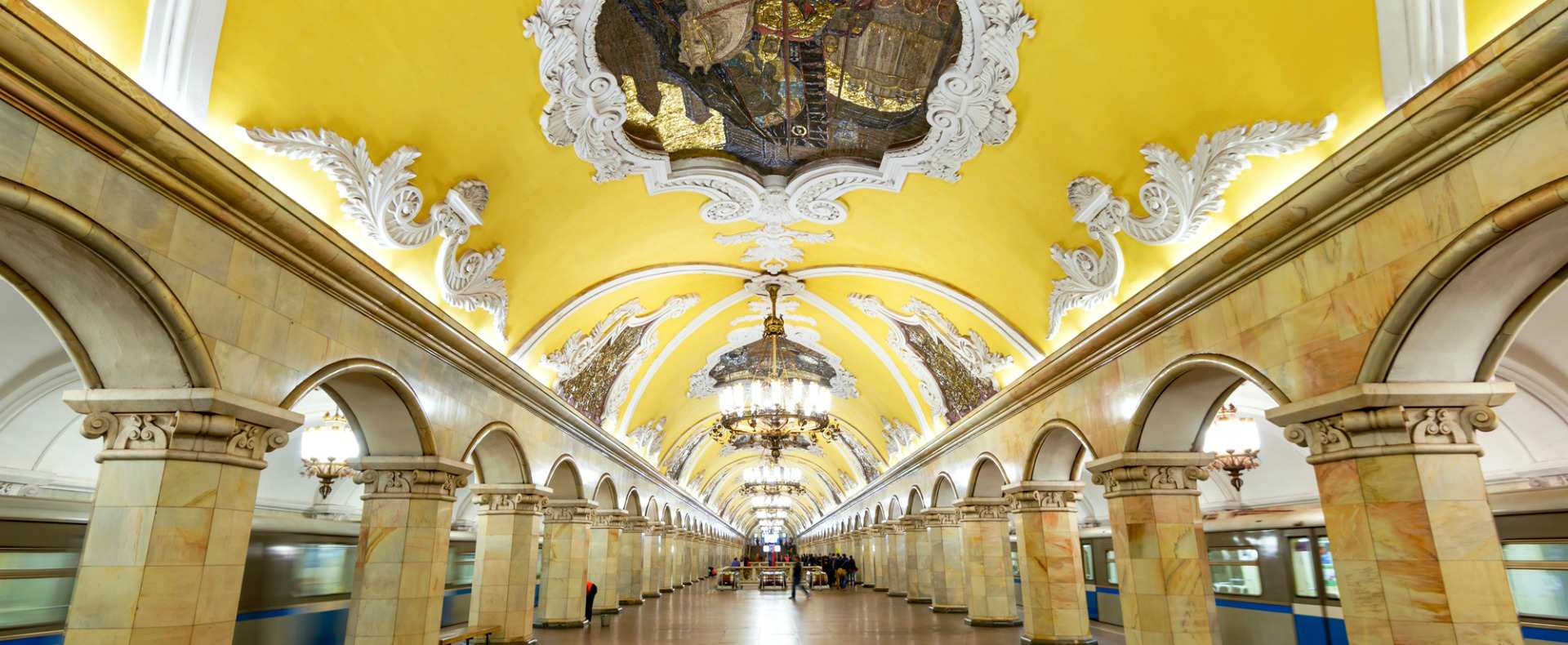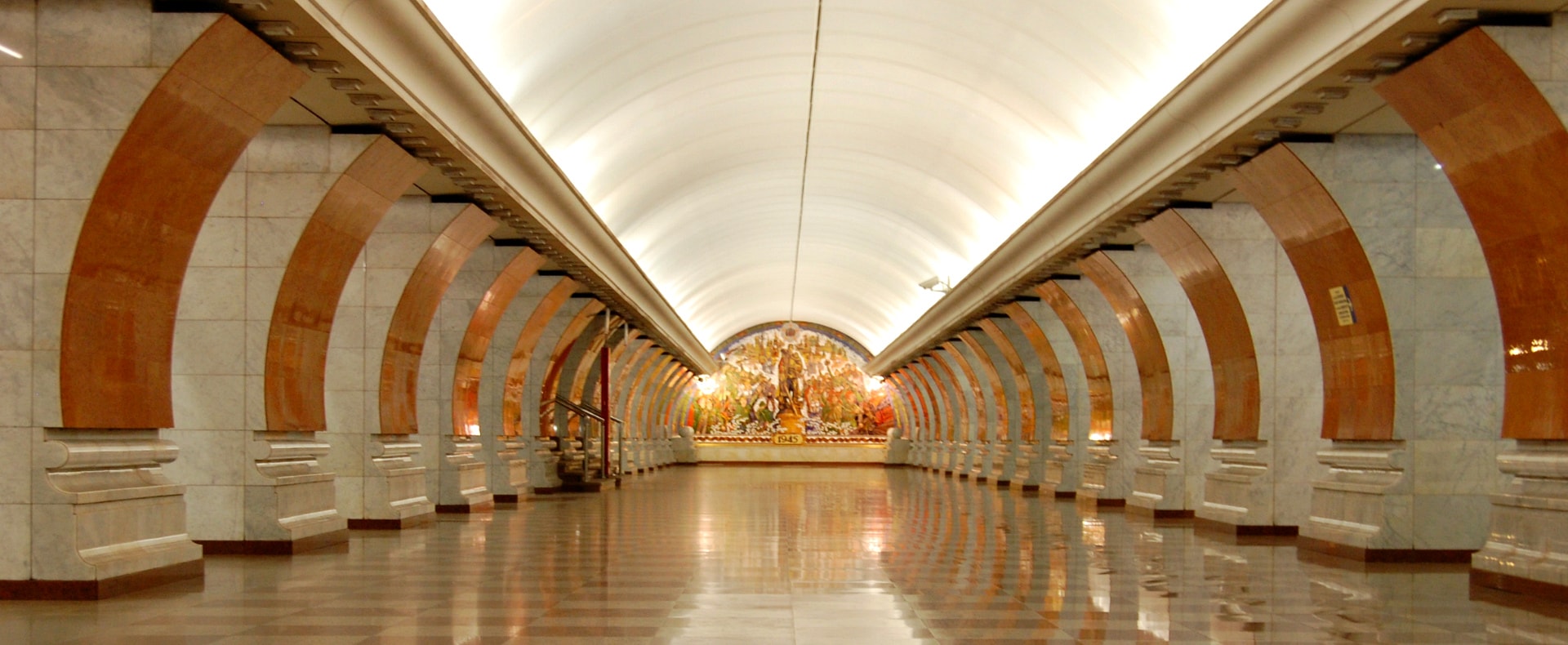Why Take a Moscow Subway Ride
The Moscow Subway is like a whole underground city that holds the world's largest collection of Stalinist Art.
This sophisticated 300-kilometer underground railway network transports Moscow commuters in style. With 14 separate lines that connect 222 stations (44 of which are the heritage sights), the Metro carries an average of 6.7 million people each day which is more than half of the city's population, but it is not merely a series of trains and tunnels.
The first Moscow Subway stations were opened on May 15, 1935, and were described as one of Stalin’s most extravagant architectural projects. The original 13 stations, along with many others that were built later, feature functional works of art, intended to depict a sort of “socialist paradise,” an extravagant reminder of the progress that the leadership of the Communist Party had given to the people of the city, promising a “radiant future” built with the hands of the proletariat.
Inside the Moscow Metro
The reflective marble walls, the bright colors, the high ceilings, and the opulent chandeliers at many of the more popular stops, however, are more reflective today of the architectural legacy that Stalinism left upon Russian culture. Indeed, the Metro in Moscow served as a prototype of other Soviet subways.
The Moscow Metro, beyond being a much-needed mass transit project, also was meant to serve as one of the world’s largest fallout shelters during the Cold War. Expanding from its role as civilian defense from air raids during the Nazi siege of Moscow, the train lines eventually spanned the city and were designed to be able to host its entire population (today at 11 million) in case of a nuclear attack.
Such plans as this have led to further rumors of a secret Metro, supposedly an extensive system built to transport the national leadership in times of war down deep tunnels that lead from the Kremlin and all government buildings to a secret city somewhere below Moscow’s Ramenki District.
Whether this is true or not, a special museum for visitors curious about such things was opened near the Taganskaya Metro Station, called Bunker 42, or the Cold War Museum.
For most visitors, the Metro experience will be one of the most memorable moments while touring the capital of Russia, with stations that are reminiscent of palaces. It is truly the mark of a great city that such sophistication can be found within something so simple as a mass transportation network.




